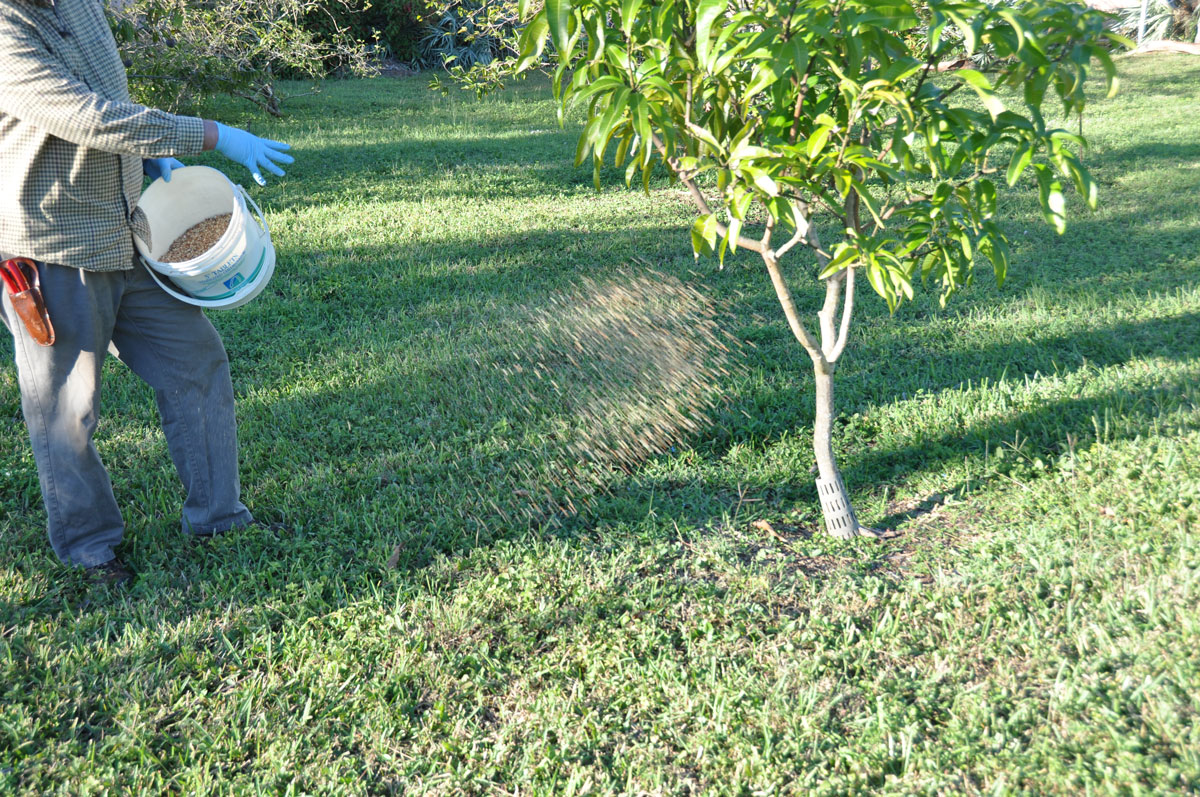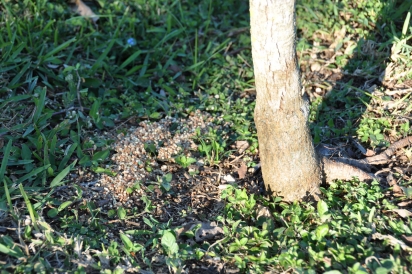Fertilizer 101
It's time for a lesson in fertilizer – when, where and how to apply what your garden needs to flourish.
Plants need 16 nutrients to thrive. They are divided into macro and micronutrients. Macronutrients are needed in larger quantities than micronutrients, but all 16 elements are needed for proper plant growth. The macronutrients are nitrogen, phosphorus, potassium, magnesium, calcium and sulfur. The micronutrients are iron, boron, manganese, zinc, chlorine, copper and molybdenum. Carbon, hydrogen and oxygen are also needed, but these are easily supplied by nature.
Micronutrients
These cannot move through the soil if the pH is high. In South Florida, we have a pH of 7.8 to 8.8, which does bind up micronutrients. If your granular fertilizer says it has zinc and boron in it, your plants will still lack these nutrients because they will be trapped in our high pH soil. Because of our limestone-based soils, we apply micronutrients through foliar sprays and not through the soil. Iron, a micronutrient responsible for helping to keep a plant green, is usually applied separately from foliar sprays as a drench. The type of iron applied should be chelated and mixed with water and then poured over the roots.
Micronutrients should be applied to plants in the rainy season, not the dry season because they will not be absorbed properly. Depending on the needs of your plants, micros can be applied two to three times in the rainy season. When you apply micros as a foliar, you should spray the tops and bottoms of the leaves of the plant thoroughly until the product drips off of the plant. Iron drenches should be applied when the soil is already moist and placed around the drip line of the tree. The drip line is the outermost portion of the tree where the canopy ends.
Macronutrients
These are usually applied in the granular form and are put out based on your plants’ needs. All fertilizer bags are required to have the ration of nitrogen, phosphorus and potassium on the label. Nitrogen helps a tree’s leaves grow, phosphorus is responsible for overall plant health, and potassium helps flowers and fruit develop. A good N-P-K ratio for tropical fruit trees is 8-3-9. But mango and lychee trees do not do well with high amounts of nitrogen, so a fertilizer with a higher ratio of potassium and a lower ration of nitrogen works better. Be aware of timing: applications of nitrogen before trees are starting to flower may cause foliar growth rather than flowering and will disrupt the fruiting cycle.
Granular fertilizer should be applied three to four times a year, but not before a tree is getting ready to flower. Start your granular applications in May and put them out every other month until the dry season. When applying granular fertilizer, don’t clump the fertilizer. Spread it out as you apply it, at the drip line and beyond. If you walk around the tree and spread the fertilizer just past the dripline, you should end up with the right amount of fertilizer per tree.
How do you know what to apply to your plants? Micronutrient deficiencies usually show up in new leaves, while macronutrient deficiencies are expressed in older leaves. It’s not usually a good idea to treat individual deficiencies. Micronutrients usually come premixed. Applying them separately can throw off the way the nutrients are absorbed. Rather, just try to treat micros or macros.
Keeping your plants on a regular fertilizer program helps to keep them healthy and less susceptible to insect and pathogen pests. And don’t forget about mulching and composting. This will help offset the need for a large amount of fertilizer applications.
Questions about your tropical fruit trees? Call a UF/IFAS extension agent at 305-248-3311. Homeowners: Adrian Hunsberger (ext. 236); commercial tropical fruit growers: Jeff Wasielewski (ext. 227); commercial vegetable growers: Qingren Wang (ext. 234).





